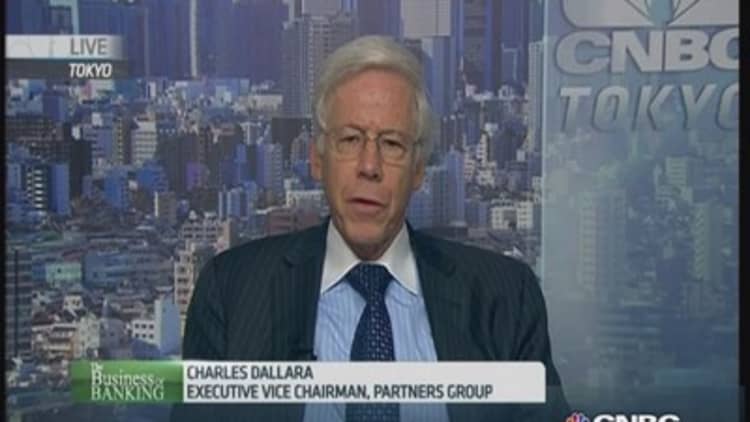Beijing has declared a partial victory over shadow banking, which has loomed large over China's $30 trillion banking system in recent years, enabling it to pursue looser monetary policy without exacerbating risks.
The explosive growth of non-bank lending — known as shadow banking — since 2010 created a thick tier of riskier borrowers paying higher rates to a new, lightly regulated sector, raising the prospect of a wave of defaults as the economy slows.
Data released last month by the People's Bank of China show that credit creation from all sources fell 6 per cent in 2014 from a year earlier, only the third annual decline since collection of data on "total social finance" started in 2002. This fall reflects the slowing growth of non-bank lending, analysts say.
"Although shadow banking has continued to grow, it has done so more slowly in recent quarters as regulatory measures to rein in the sector's growth appear to be having an effect," says Michael Taylor, chief credit officer for Asia-Pacific at Moody's.
The steady stream of regulations intended to curb risky off-balance-sheet financing has led to a rebound in the share of new debt channeled through banks, with local-currency bank loans comprising 63 per cent of all new credit last year, the highest level since the stimulus year of 2009.

The regulatory push to channel more credit back on balance sheet is reflected in tweaks that broaden the definition of deposits used to calculate banks' loan-to-deposit ratios. Previously, the 75 per cent LDR ceiling has been a key motivation for banks to move loans off balance sheet in recent years, analysts say.
Among non-bank channels, corporate bonds — which are considered less risky than other forms of non-bank financing due to their higher liquidity and transparency — rose to an all-time high of Rmb23.8 trillion ($3.8 trillion) last year, or 15 per cent of all new credit, according to the People's Bank of China. This propelled bonds past trust loans as the economy's third-largest source of credit, behind only bank loans and loans between companies.
Read MoreWhy people fear a shadow banking crisis in China
The value of trust loans — which had been the focus of concern over shadow banking because they delivered funds to property developers, local governments and other sectors that banks were trying to avoid — plummeted by more than two-thirds to Rmb517 billion ($83 billion), for 3 per cent of all new credit.
The regulatory push against risky practices has set the stage for targeted monetary loosening, following GDP data showing China growing at its slowest pace in 24 years in 2014. The drive "should help provide [the PBoC] with more flexibility on future monetary policy with less concern on the potential negative 'side effects' if further easing is needed," Richard Xu, China financials analyst at Morgan Stanley, wrote last month. Indeed, the central bank in January confirmed market rumors that it had recently injected fresh cash into the banking system via its newly created medium-term lending facility.

Concerns remain, however, that official data fail to track all kinds of finance as new forms of funding emerge to replace those tamed by regulation. "Certain shadow credit activity continues to migrate to the asset management businesses of Chinese security companies, which is not fully captured by total social financing," Wang Tao, head of China economics research at UBS, said in a note.
Even as trust loans nosedived last year, other forms of trust finance continue to thrive. Another emerging form of shadow finance is online peer-to-peer lending, which reached Rmb139bn by the end of 2014. Though still tiny compared with other types of credit, online lending is growing fast.
More from the Financial Times
The perils of a strong US dollar
Dangerous cracks at Europe's center
France gripped as Dominique Strauss-Kahn vice trial begins
This month, the banking regulator also issued draft rules to restrict the use of company-to-company loans, China's largest non-bank lending channel. So-called entrusted loans, in which a non-financial business acts as lender with a bank as intermediary, hit a 12-month high in December. Such lending has been largely immune from the crackdown affecting other forms of shadow banking.
"Some entrusted loans might have been used to feed the feverish stock markets via margin financing or other channels," said Bank of America Merrill Lynch China economist Lu Ting.
Concerns remain about moral hazard in China's debt markets amid the persistent assumption among investors that even high-yield debt enjoys an implicit government guarantee. Technical defaults occurred on one corporate bond and several trust products last year but in each case investors were eventually repaid in full.

